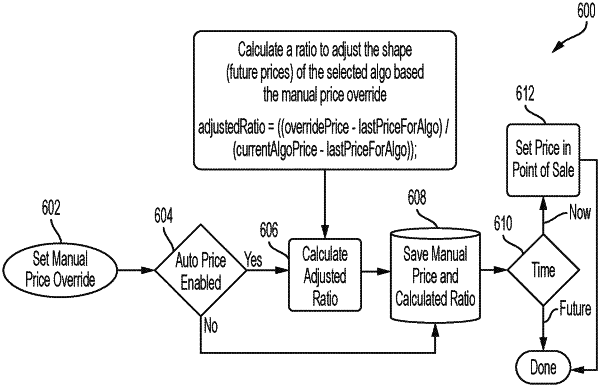| CPC G06Q 30/0206 (2013.01) [G06F 16/2358 (2019.01); G06F 16/2379 (2019.01); G06F 16/256 (2019.01)] | 4 Claims |

|
1. A method comprising:
maintaining, on a cloud-based control platform, a database comprising a plurality of data objects for a plurality of remotely-controlled assets, the data objects for each remotely-controlled asset comprising:
a plurality of static hyperparameters associated with the asset;
a plurality of dynamic hyperparameters associated with the asset; and
a template that specifies values of a variable associated with the asset for a plurality of future time points;
by operation of the cloud-based control platform, determining updated templates for the data objects, wherein each updated template is determined by:
calculating target values for the variable for the plurality of future time points based on a target criterion;
communicating with one or more remote computer systems to determine current values of the dynamic hyperparameters;
determining a ratio based on the current values of the dynamic hyperparameters;
calculating scaled values for the plurality of future time points by multiplying the ratio with the target values;
determining an adjustment based on the static hyperparameters;
calculating first modified values for the plurality of future time points by applying the adjustment to the scaled values;
calculating second modified values for the plurality of future time points by applying an override value to the first modified values; and
assigning the second modified values to the template; and
by operation of the cloud-based control platform, performing centralized, coordinated control over the plurality of remotely-controlled assets, wherein the centralized, coordinated control over the plurality of remotely-controlled assets is performed by iteratively instructing remotely-controlled systems according to the updated templates at each of the plurality of future time points, wherein instructing the remotely-controlled systems comprises:
identifying next values of the variables, wherein the next values of the variables are the values specified by the updated templates for a time point associated with a current time; and
communicating the next values to the remotely-controlled systems with instructions to assign the next values of the variables to respective settings associated with the remotely-controlled assets.
|